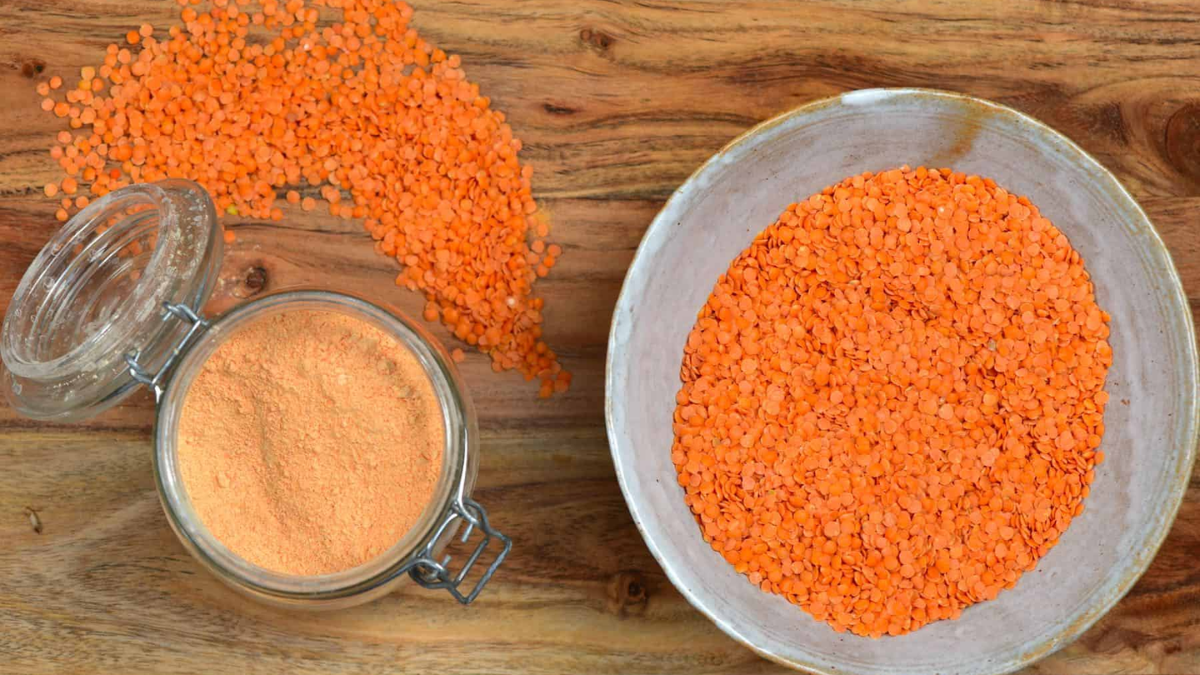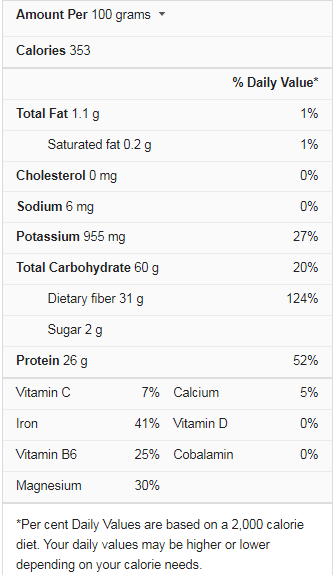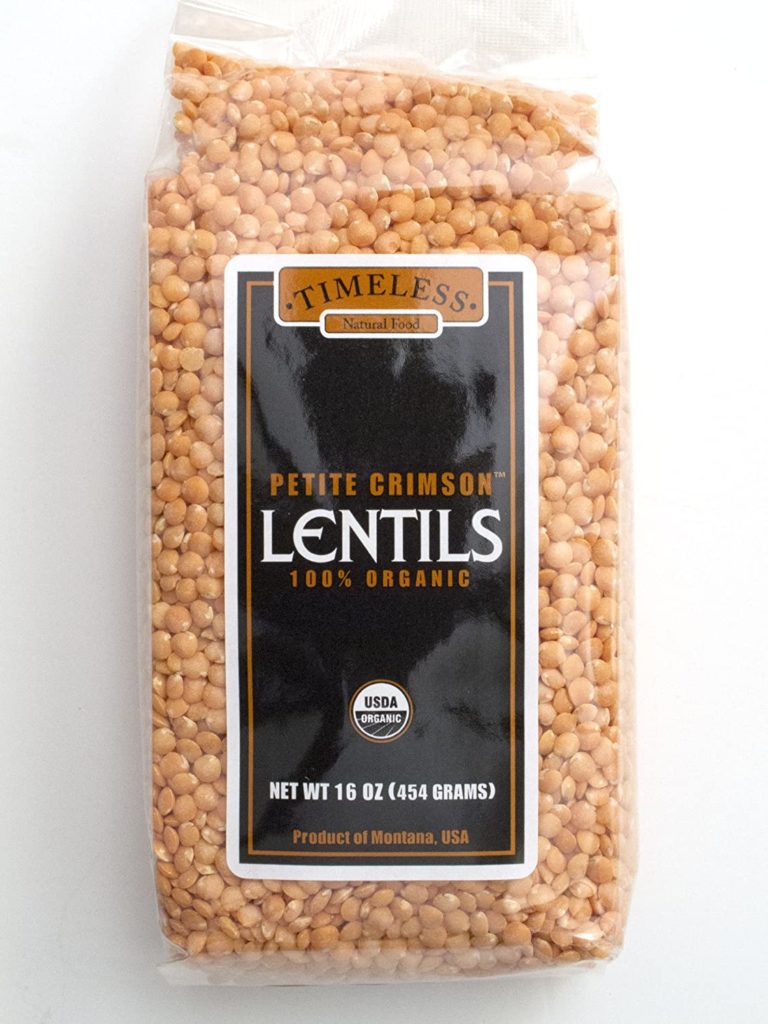Lentils are one of the world’s oldest health foods. These beans were first cultivated in the Middle East around 8,000 B.C. and have subsequently spread west. The Greeks considered the bean a poor man’s food but a royal feast by the Egyptians. The lentil came to the Americas in the early 16th century. During WWII, it became famous as a low-cost, high-protein meat substitute. The lens-shaped bean comes in a variety of shapes and sizes. The most prevalent colors are brown, green, and red. Dietitians prefer gluten-free cuisine since it is abundant in nutrients. Chefs say its delicate flavor makes it the perfect canvas for other meals and flavors.
Lentil Nutrition Facts
Health Benefits of Lentils
Lentils are a low-cost, high-nutrient legume. Lentils are a pantry staple in many cuisines worldwide, with a range in texture, taste, and color. Unlike other colored lentils, red lentils have a pleasant, unique flavor. It’s the quickest and easiest lentil to prepare, and once cooked, it turns into a smooth puree-like consistency, making it ideal for classic Indian stews or dhal, curries, and thick creamy soups. Red lentils are great for thickening soups and stews, but they also provide a lot of health advantages and nutrients that your body will appreciate.
High Nutrient Content
Because of their excellent nutritional value and ease of incorporation into your diet, red lentils are a welcome food for vegans and non-vegans. It’s also a terrific meat substitute that’s light on your stomach and may aid weight loss.
Red lentil is a superfood that contains a staggering number of critical vitamins and minerals that your body will appreciate. Incorporating red lentils into your diet is a terrific way to reap these health advantages because of their high protein and fiber levels. The following are some of the nutritional health benefits of red lentils:
A Good Source of Fiber
A cup of cooked red lentils has about 39 grams of carbs and 16 grams of dietary fiber. Furthermore, one cup of cooked red lentils has only 3.6 grams of sugar, indicating a minor impact on blood sugar levels.
Protein-Dense
Red lentils include 18 grams of protein per cup, which is enough to meet 32% of men’s daily protein requirements and 38% of women’s. Although red lentils do not contain enough amino acids, consuming them with other plant-based protein sources such as whole grains and black beans can provide all of the amino acids your body needs each day.
B-Vitamins are Abundant
Red lentils are the best source of B vitamins, and vitamin B6, pantothenic acid, and thiamine are abundant. Cooked red lentils also contain 358 micrograms of vitamin B9 or folate. One cup of cooked red lentils offers 90 percent of the 400 micrograms of folate required by people each day. Folate is required to produce red blood cells and DNA and energy consumption.
Iron’s Source
One cup of cooked red lentils contains 6.6 milligrams of iron. Men require 8 milligrams of this mineral per day, and therefore one cup of red lentils meets 82 percent of that amount. On the other hand, women require 18 milligrams of iron per day, and therefore one cup of cooked red lentils offers 37 percent of the daily requirement.
It Encourages a Healthy Pregnancy
Pregnancy is not always easy for women, especially if they lack the nutrition they require to have a safe and healthy pregnancy. Red lentils are high in vitamin B9, which contains folic acids, ensuring proper brain development and preventing congenital disabilities like spina bifida. Similarly, pregnant women who take this vitamin throughout their pregnancy are less likely to give birth prematurely.
It could Help You Feel more Energized
One cause of low energy levels is iron insufficiency. Iron is a component of hemoglobin that aids in the normal oxygenation of red blood cells. Because red lentils are high in iron, they can help prevent lethargy caused by low oxygen levels.
Helpful for Weight Loss
Cooked red lentils have 230 calories per cup. However, they are high in nutrients and contain essential fiber and protein for weight loss. They fill the stomach, limiting hunger for extended periods after eating and preventing binge eating, which can derail your healthy eating habits. Fibre also helps keep blood sugar levels by slowing carbohydrates’ rate entering the system.
Can You Eat Lentils Every Day?
Beans, peas, chickpeas, and lentils can considerably lower lousy cholesterol when consumed daily. According to a new study, eating one serving of beans, peas, chickpeas, or lentils per day can considerably lower “bad cholesterol” and hence the risk of cardiovascular disease. According to Hickey, eating high-fiber meals like lentils daily can help “push excess waste through your digestive system, reducing constipation and IBS symptoms. He also points out that lentils are high in potassium, which “helps minimize the adverse effects of sodium and lowers blood pressure.
The following are the top five reasons to consume lentils (and other legumes) at least three times per week: Protein: According to studies, women over 40 require extra protein to maintain muscle mass and avoid weight gain (or help with weight loss). The amount of protein consumed and its distribution throughout the day are critical considerations.
Are Lentils Good for the Skin?
Red lentils include ingredients that make them one of the best natural exfoliators for removing dead skin cells and leaving smooth and dirt-free skin. It also aids in the treatment of acne and blackheads. Red lentils answer all skin problems, whether a hard beach tan, rapid aging, acne, rough skin, or pigmentation. Pulses, which are often found in most kitchens, are not only high in nutrients but also offer skin-beneficial properties.
According to Hickey, eating high-fiber meals like lentils daily can help “push excess waste through your digestive system, reducing constipation and IBS symptoms. He also mentions that lentils are high in potassium, which “helps minimize the negative effects of sodium and lowers blood pressure.”Lentils, an acne-fighting substance. Lentils are not only low in glycemic index, but they are also high in zinc. Zinc is an anti-inflammatory mineral that helps acne outbreaks by reducing swelling and redness.
How Many Lentils Should I Consume Each Day?
“It is possible to have too much of something even if it is healthy,” Hickey cautions, “and lentils are no exception.” “The fiber in lentils is quite dense and difficult for your digestive enzymes to break down, causing gas and discomfort,” he explains. He suggests that you consume the recommended amount of fiber. Women should consume at least 21 to 25 grams of fiber per day, while men should consume 30 to 38 grams per day for optimal health. 15.6 grams of fiber, or 63 percent of your daily value, are found in one cup of cooked lentils. Strong spices are commonly used for cooking lentils, which might induce indigestion in certain people. Lentils are a substantial source of potassium.
However, in persons with weak kidney function, too many lentils in the diet can cause hyperkalemia (symptoms include vomiting, lethargy, irregular heartbeat, and difficulty breathing). Raw lentils, like other legumes, contain lectin, a type of protein that adheres to your digestive tract and causes a variety of unpleasant reactions, including vomiting and diarrhea. Yikes. Thankfully, lectins are heat sensitive, and when cooked, they break down into more digestible components.
Is it True that Lentils Help You Seem Younger?
Lentils. Because they include crucial collagen-boosting vitamins, protein, complex carbs, and fiber, lentils are an odd anti-aging hero. They also play a crucial role in the body’s manufacture of hyaluronic acid, a solid anti-aging chemical. Lentils. Are lentils high in protein and folate, an essential B vitamin? Folate, often known as vitamin B9, is required for cell development and tissue growth, including hair growth.
If you avoid getting silver strands, boosting your vitamin D consumption can help. Drinking enough water each day allows your skin’s tissue and cells to be replenished, resulting in younger and healthier skin. Another essential aspect of preserving a youthful appearance is to rest! Your body generates chemicals that stimulate cell turnover and renewal as you sleep.
Do Lentils Contain Proteins or Carbohydrates?
Lentils are substantial in fiber and complex carbs, with minimal fat and calorie content. Lentils are a great way to increase your protein consumption because of their high protein content. They’re naturally gluten-free, making them a tasty gluten-free kitchen staple. When you cut out meat, dairy, eggs, and poultry from your diet, you’re likely to replace many of those protein-dense calories with fruits, vegetables, grains, nuts, and seeds, which are higher in carbohydrates and fats and lower in fat protein.
However, there are several outliers, such as the lentil. While it depends on whatever cut of meat you’re looking at, lentils have around half the meat protein. Lentils are an excellent plant-based protein source; however, there’s not much comparison: 17.9 grams of protein in 1 cup of lentils (230 calories).
Conclusion
Among other legumes, lentils have the second-highest protein content (soybeans take top honors). When combined with a complete grain like brown rice, they can deliver the same protein as meat. However, lentils are better for your heart than red or processed meat. Protein is found in bones, muscles, and skin, and it may also aid weight loss by staying satiated for longer than other foods. Fibre keeps you satiated, and it’s plentiful in lentils. A single serving contains 32 percent of your daily fiber needs.
It can aid in preventing cholesterol, diabetes, and colon cancer. Fiber aids constipation prevention by moving waste through the digestive tract. Potassium, folate, and iron in lentils provide several health benefits. By counteracting the harmful effects of salt, potassium lowers blood pressure. Folate aids in the production of red blood cells and protects the heart. If you’re pregnant, folate is critical for your baby’s development. Iron helps to keep you from getting tired.




